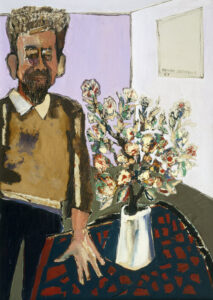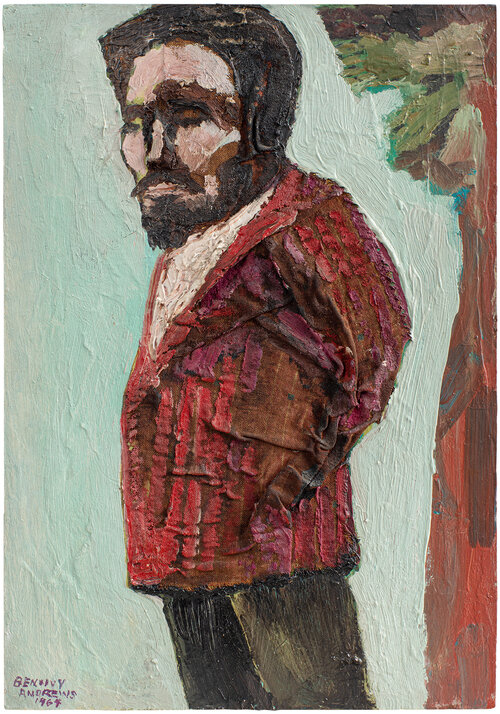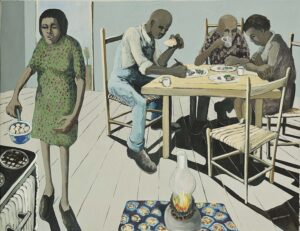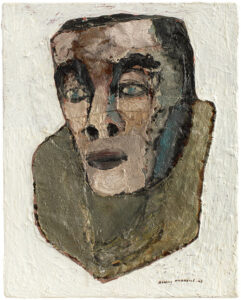
Benny Andrews
Self Portrait
About:
Benny Andrews was an artist, educator and activist. He was born in Plainview, GA in 1930. Andrews earned a BFA from the School of the Art Institute of Chicago in 1958. Soon after, he moved to New York City, where he would live, work and paint for nearly five decades.
Andrews co-founded the Black Emergency Cultural Coalition (BECC), which agitated for greater representation of African American artists and curators in New York’s major art museums in the late 1960s and 70s. He also led the BECC in founding a groundbreaking arts education program in prisons and detention centers. Andrews taught art at Queens College for nearly three decades, beginning in the late 1960s. From 1982 through 1984, he served as the Director of the Visual Arts program for the National Endowment for the Arts.

Portrait of the Artist as an Artist


Dinner Time/Actor Image
As a student in Chicago, Andrews developed a practice of incorporating collaged fabric and other material into his figurative oil paintings, a technique he would continue throughout his career. In addition to working in oil and mixed-media collage, he made sculptures, prints and drawings. He also illustrated several books written by his brother, the author Raymond Andrews, as well as many children’s books, including a biography of civil rights icon Congressman John Lewis. He continued his prolific output of artwork, which ranged from explorations of history and social justice to intimate depictions of friends and family, until his death in 2006. In the foreword to the 2013 exhibition catalog Benny Andrews: There Must Be a Heaven, Congressman Lewis remembered Andrews:
“For Benny there was no line where his activism ended, and his art began. To him, using his brush and his pen to capture the essence and spirit of his time was as much an act of protest as sitting-in or sitting-down was for me. I can see him now: thinking, speaking, articulating what needs to be done and in the next few moments trying to make real what he had been contemplating. He was honest to a fault, and I think it was his determination to speak the plain truth that shaped his demand for justice and social integrity. He never aligned with any political group, but would offer the full weight of his support to anyone he thought was standing for truth.”
(text the Estate of the artist)
